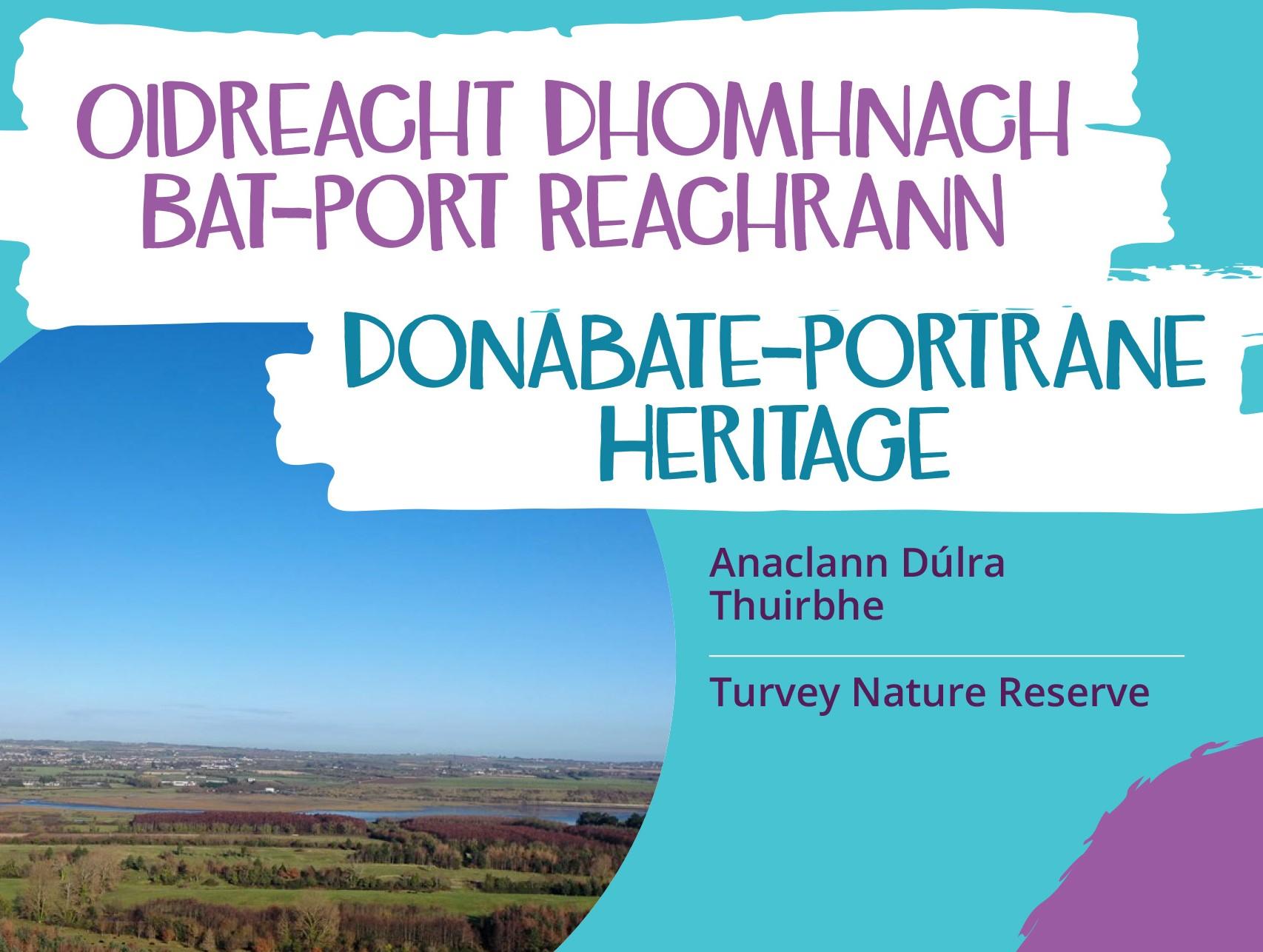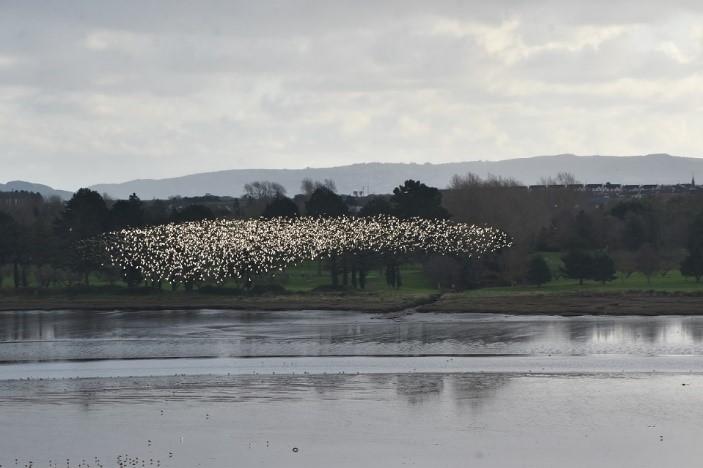Turvey Nature Reserve

Photo credit: Turvey Nature Reserve by Mark Broderick
Turvey Nature Reserve, which lies along the Rogerstown Estuary features allotments, walkways, hedgerows, hay meadows, and Fingal Forest (planted by local volunteer groups and schoolchildren). The reserve was an area of reclaimed land used as grazing pasture but is now being restored back to saltmarsh. The saltmarsh is inundated with sea water to varying degrees on a daily basis. It is during these times that the brackish grasslands and inter-tidal creeks are extremely important for birds, providing safe roosting sites for thousands of wintering wildfowl and waders. The soft mud flats, exposed during low tides, are their feeding areas. The winter time is when European Golden Plover, Grey Plover, Northern Lapwing, Eurasian Curlew, Black-tailed Godwit, Dunlin, Red Knot, Sanderling, Common Redshank, Eurasian Oystercatcher, herons, geese and ducks are numerous. During the summer Northern Lapwing breed and the surrounding trees are home to a variety of summer visitors, such as Willow Warbler, Common Chiffchaff and Blackcap, especially within the Turvey Parklands, managed by Fingal County Council and Fingal Birdwatch Ireland who look after the two bird hides on site.

Photo credit: Birds over the Estuary courtesy of Mick Mongey
Did you know….
In early Christian times, the Cianachta Bec occupied the peninsula, and their chieftain for a period was Tuirbe Tragmár (Turvey of the Strands), father of the Gobán Saor, who was in turn a famous architect of round towers. Legend has it that Tuirbe Tragmár used to throw his axe or hatchet, into the tide to stop the sea advancing. The townland name of Turvey originates from Tuath Tuirbhe.
Find out more
The Birdwatch Ireland Site Guide – your one-day itinerary to Rogerstown Estuary by Sean Pierce https://birdwatchireland.ie/app/uploads/2019/03/Site-Guide-Rogerstown-Estuary.pdf
Donabate-Portrane Heritage Audit https://www.fingal.ie/sites/default/files/2023-03/Donabate%20Portrane%20Heritage%20Audit%20Report%20FINAL%2019.09.2022.pdf

